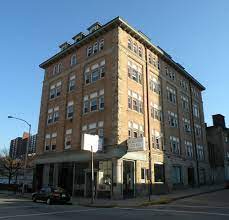Pennsylvania boasts diverse landscapes and rich cultural heritage, attracting visitors and residents alike. However, concerns regarding public safety persist in certain regions. This analysis delves into crime statistics, highlighting the five cities with the highest rates in the state, and draws comparisons with national and regional trends.
While Pennsylvania experienced a significant increase in serious crime rates (27.1%) in 2020, second only to Louisiana, it ranked outside the top 10 nationally. The FBI’s Uniform Crime Reports indicate a rate of 389.5 per 100,000 residents, slightly above the national average of 388.0. Neighboring states generally exhibited higher rates, with Virginia and New Jersey surpassing 200 per 100,000.
The analysis focuses on five specific cities within Pennsylvania exhibiting concerning crime rates:
- McKeesport: Located in Allegheny County, McKeesport grapples with a crime rate of 4,291 per 100,000 residents. This translates to a 1 in 24 chance of experiencing crime, with poverty and unemployment presenting significant challenges.

- Chester: Situated in Delaware County, Chester’s crime rate stands at 4,389 per 100,000, exceeding the state average by over 116%. Historical issues with crime and government corruption contribute to its inclusion on national lists of “worst places to live.”
- Yeadon: Yeadon, also in Delaware County, experiences a crime rate of 4,083 per 100,000. Property crime is particularly prevalent, with a 1 in 25 chance of home burglary. The city exhibits significant income disparity, with a median household income of $48,420 compared to a cost of living exceeding $138,000.
- McKees Rocks: This Allegheny County town, nicknamed “The Rocks,” presents a contrasting picture. Despite its relatively small population of 5,920, the crime rate of 6,409 per 100,000 is 173% higher than the national average. While concerning, the absolute number of crimes remains lower compared to other analyzed cities.
- Darby: Darby, one of the state’s most dangerous towns, endures a high homicide rate (152 in 2021) and a property crime rate of 4,625 per 100,000 residents. Poverty and low median income levels are prevalent factors contributing to public safety concerns.
Addressing the Underlying Issues:
While recognizing Pennsylvania’s positive aspects, acknowledging the significant challenges faced by these high-crime cities is crucial. Addressing the root causes of crime, such as poverty, unemployment, lack of educational attainment, and gang activity, requires multifaceted solutions. Both state and local governments must collaborate to implement effective policies and programs that improve quality of life and enhance public safety in these communities.
Conclusion:
This analysis highlights the complexities of crime within Pennsylvania. While the state’s overall crime rate falls within national averages, specific areas require focused attention and intervention. By addressing the underlying social and economic issues, Pennsylvania can create safer and more prosperous communities for all its residents.
